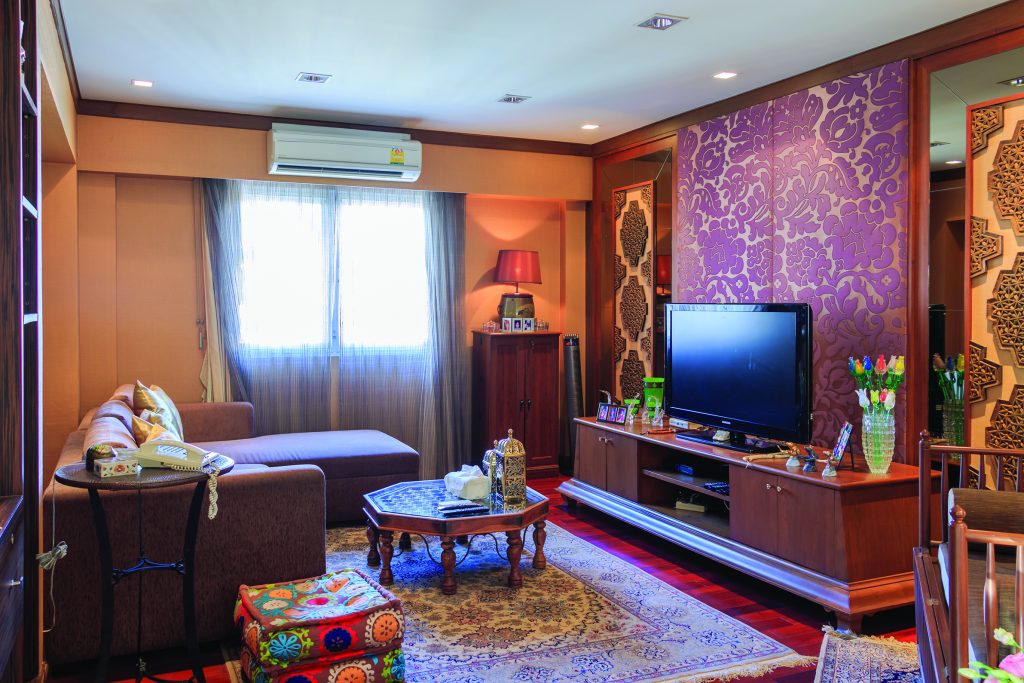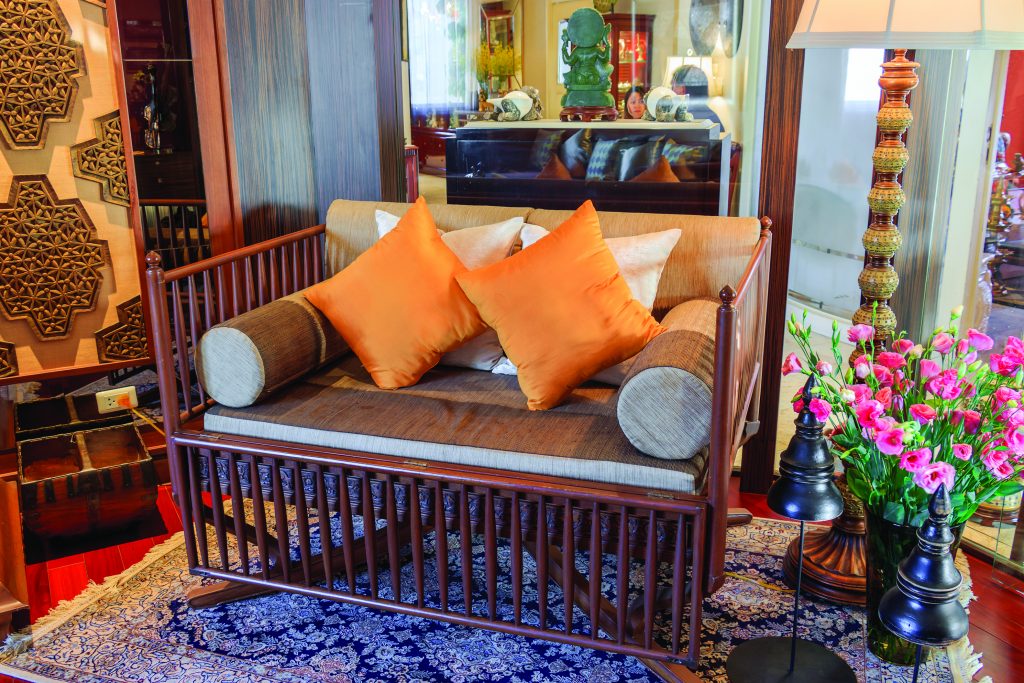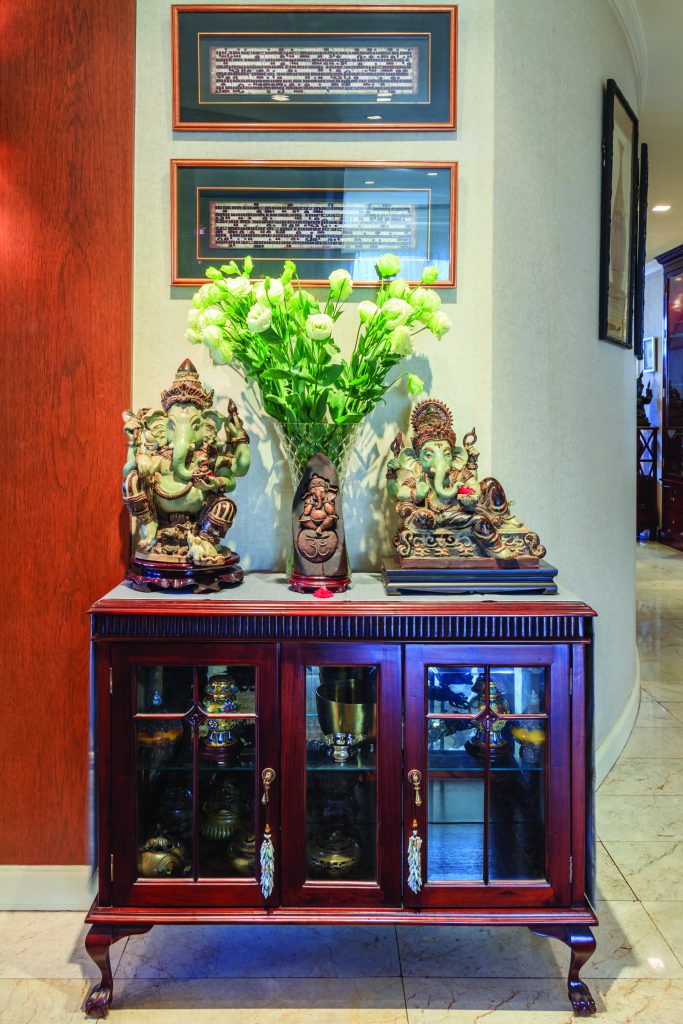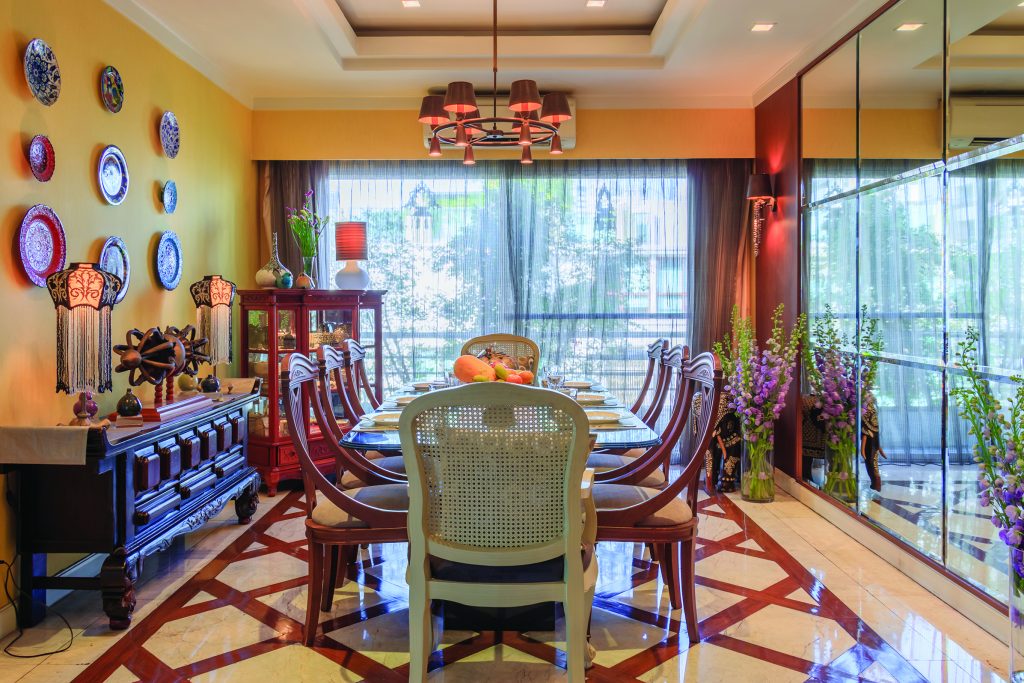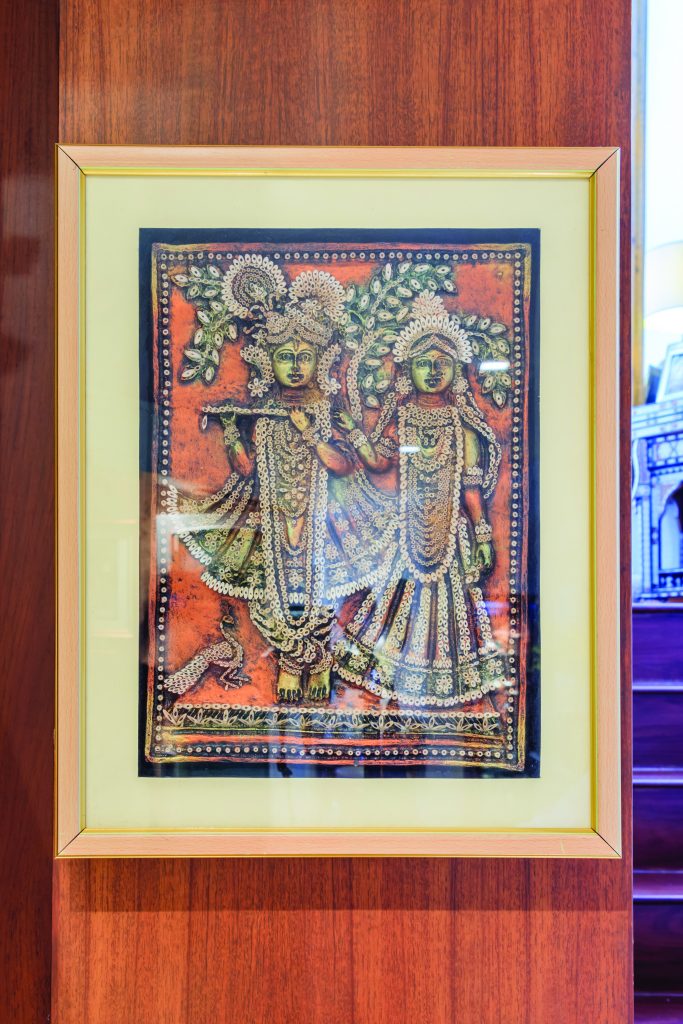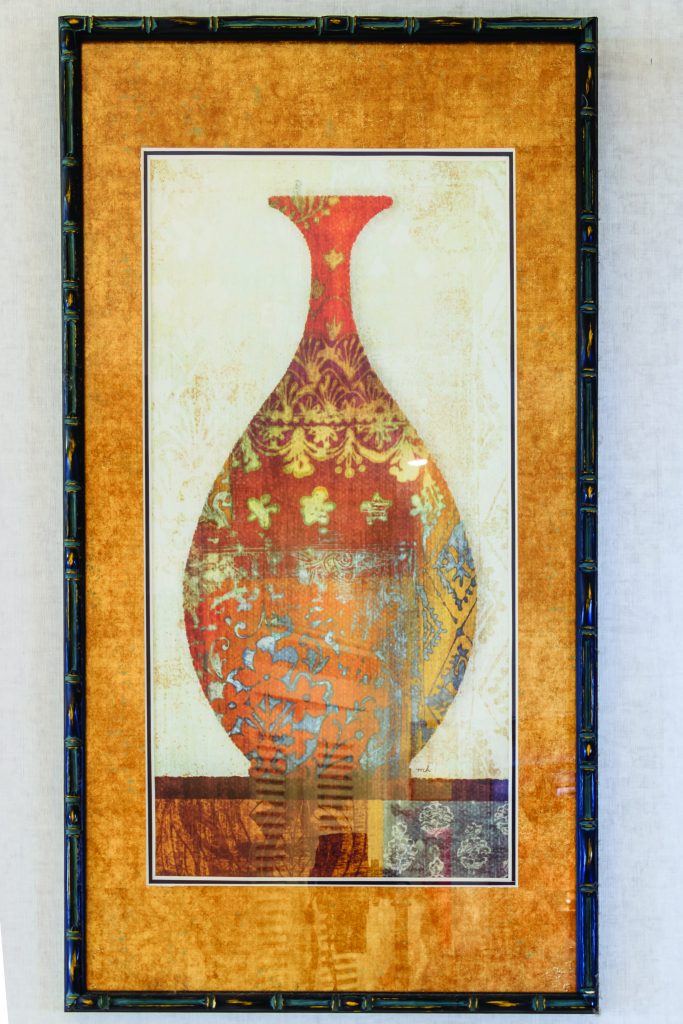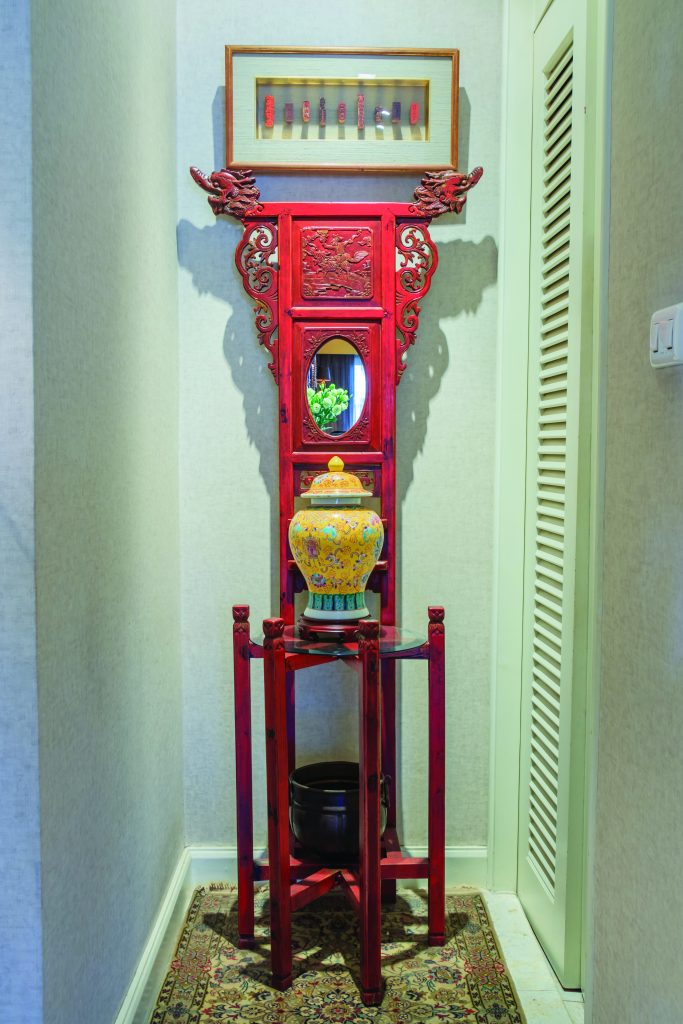The Nirula family transform history into art in their home of over 54 years.
By Aiden Jewelle Gonzales
When I first sit down with Vipha Nirula in the sophistication of her television room, she is quick to assure me that the home we’re in primarily belongs to her mother-in-law, Krishna Nirula. “I only look after it for her,” she tells me, but it’s clear she takes the role of custodian seriously – she’s the primary creative force behind most of the design choices in the sprawling space, putting heart and soul into the decorations and renovations over the years.
And the years have indeed been plenty. I was awed to learn that the family had lived here for 54 years, despite the building itself having metamorphosed over time. “This place actually used to be a two-storey house with six bedrooms,” Vipha recalls, “but back then when it rained, it would flood in the lane and the water would come into the living room. We had the house renovated into a seven-storey building, and recently we’ve made the floors below into serviced apartments. That’s how Aspira Residences came to be.” The transformation occurred 25 years ago, and since then, the family has amassed a wealth of stories throughout their home, ensuring that around every corner one is sure to run into another piece of personal or even cultural history.
The well-appointed living room, for example, which has been divided into three separate sitting areas, harbours a couch that was part of a set of furnishings from the original house. The delicate aspect of the sofa belies the almost half-century of memories hidden in each intricately hand-carved curlicue; a match to the bed in Krishna’s room, both from the now- defunct Sweet Home Furnishings store. “We couldn’t keep all the original furnishings, but I made sure to save some so we could have a piece of the original home with us,” Vipha says.
Indeed, throughout the condominium are homages to the original building and the rest of the family that once lived there, their presence preserved in the imprint of memories in each item. A standout is an unusual elephant chair in the television room that kept drawing my eye throughout our interview – I was gratified to learn that it was, as I thought, a one-of-a-kind piece, though not at first. It began life as a crib for the siblings of Vipha’s husband, Vinai, nigh-on 40 years ago, then for Vipha’s daughter, Anaida, and finally outgrown its use as a cot for multiple generations of Nirulas, they had it transformed into the chair that had so caught my eye with its gleaming wooden spindles and inviting bronze and orange plush. Another item whose description struck my fancy is an enamel treasure chest in Vipha and Vinai’s master bedroom, an exquisite peace from Rajasthan that is made all the more valuable by what it holds inside – every artefact that the proud parents have kept from their daughter’s life growing up.
A more esoteric story lies behind a celadon Ganeshji statue in the dining room, which Vipha says struck her fancy years ago in the Jamjuree area. Told that it was too heavy to move, she was shocked when her daughter’s nanny picked the statue up with ease – taking it as an omen that the statue wanted to go home with them, Vipha promptly brought it. Years later, she found its pair in the same shop and now they sit together, silent protectors of the abode.
It’s not only family history that infuses the house with so much spirit – Vinai and Vipha have curated a stunning collection of antiques and vintage items throughout the years. To the right of the gently undulating white hallway – designed by their architect 25 years ago to impressive effect – are two brass shields from India, bought three decades ago, adorning the wall. Vinai hoists one up to show me its subtle oral pattern before striking a pose to show how it would have been used; his joy in their collection transforming him into a veritable Captain India in a dress shirt and slacks of the house won’t clash in the form of spaces that are too contemporary or speak too strongly of a certain era. “I don’t like anything that’s overly modern, and I don’t like anything that’s too vintage – unless it’s an antique piece,” she reveals. “If it’s old, then it has to be really old. Otherwise I want things that lie between the two, so you can move things around. If you’re too rigid either way, you can’t add anything too antique or too modern.” To that end, all the rooms are tastefully done up in creams, bronzes, or golds, with striking pops of colour in the form of furnishings and art.
In a small alcove tucked away by the entrance is an old Chinese dressing table, tall and elegant and adorned with dragons. It’s been transformed into a stand for a yellow celadon vase, striking against the red hue that still stands out in the worn wood of the piece. Above is a collection of Chinese stamps used centuries ago, framed for posterity. It’s a curious tribute to the Far East, but one that ts in seamlessly with the other elements that whisk you around the world: plates from Germany, Turkey and Switzerland; Yves Lohé sculptures of blown glass and bronze from France that somehow capture music in tangible form; brocaded swathes of fabric from India framed and presented as pieces of art in themselves; and limited edition porcelain statues from Lladró in Valencia, Spain.
In the living and dining rooms, Vipha eagerly walks me through her silver collection, genuine antiques that include anklets and belts from India, interspersed with mother-of-pearl and turquoise, as well as, on a more intimate bent, her paternal grandmother’s wedding bangles, which she gave to Vipha on her 25th silver wedding anniversary.
With so much in their home seemingly picked right out of the days of yore, Vipha has made sure that the design elements of the house won’t clash in the form of spaces that are too contemporary or speak too strongly of a certain era.“I don’t like anything that’s overly modern, and I don’t like anything that’s too vintage – unless it’s an antique piece,” she reveals. “If it’s old, then it has to be really old. Otherwise I want things that lie between the two, so you can move things around. If you’re too rigid either way, you can’t add anything too antique or too modern.” To that end, all the rooms are tastefully done up in creams, bronzes, or golds, with striking pops of colour in the form of furnishings and art.
Anaida’s room, however, stands out for its whites, pinks, and golds, a celebration of femininity and charm. “She’s had this room for 12 years now, after we renovated a balcony that used to be here,” Vipha tells me, “she’s pretty particular – she likes nice things and she looks after them.” At the end of the day, this is the philosophy that drives the family behind what they pick for the house. “It’s how you prioritise,” Vipha says,” “You buy what you love, and you keep it, and it’s a part of you.” Indeed, the house, with its ve centuries of history, is now as much a part of the family as they are part of it.



